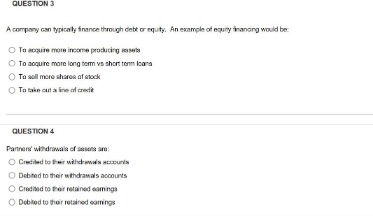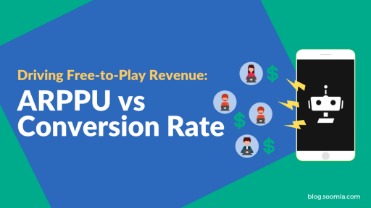
Land depreciation can also make people more likely to invest in real estate. When an investor knows that the value of a property will go down over time, they are more likely to buy it because it will cost them instructions and forms less. It can lead to more money being put into real estate, which can help the economy grow and create jobs. Deferred maintenance means putting off repairs or replacements for a lack of money or other reasons.
- Despite its importance, several misconceptions and false beliefs about land depreciation exist.
- When someone buys land with some sort of construction on it, the price will be divided into the land and the construction.
- Remember that this process does not eliminate your need to pay taxes and recapture, but it defers it.
- This risk is very real, especially early in the life of the asset when principal payments are at their lowest and reductions in asset market value is at its highest.
Another factor to consider is that large asset purchases are often financed with borrowed capital. When that is the case, the initial exchange of cash and asset book value is smaller than an outright purchase (no debt). As loan principal payments are made, cash is exchanged for an increased portion of the asset book value that in turn increases the equity or owned portion of the asset. An additional portion of the cash outflow is paid to cover the interest expense. In essence, the large initial investment is traded off for the opportunity to spread out the cash outflow over multiple years and cost of doing this is captured by the interest expense.
What Qualifies as a Depreciable Asset?
You may also write down the value when there is evidence of degradation by natural or unnatural causes. For example, an earthquake hits and devastates an area, or mining activity that completely exhausts resources. The easiest way to find, save, and personalize your search for the perfect piece of land. Let’s take a deeper look at these accounting exceptions to understand how they work. Assets like equipment, furniture, and vehicles typically have a useful life of three to twenty years before needing replacement. Buildings might last twenty to fifty years before needing significant renovations.
HMRC’s annual report and accounts 2022 to 2023: our accounts … – GOV.UK
HMRC’s annual report and accounts 2022 to 2023: our accounts ….
Posted: Thu, 24 Aug 2023 06:27:58 GMT [source]
It is one of the tax advantages of owning investment real estate, although depreciation also applies to other business assets, like machinery. The depreciation process provides recompense for the investment cost during the asset’s gradual loss of utility. Whether you own an office building, a retail property, or a residential rental, you can use the depreciation process to recover some of the investment over time.
What is Land Depreciation? – A Comprehensive Guide to Land Depreciation
Being a complex area, it is always advisable to consult an accounting expert. You will also need to have a trusted quantity surveyor to help with the valuations. This can include stocks, inventory, raw materials, computers, printers, trucks, machinery, workstations, land, and buildings. The IRS allows businesses to allocate the depreciation cost over the life expectancy of an asset. The land that is used in a business (as opposed to land that is an investment, or land that will be sold by a real estate developer) is a tangible asset that is assumed to have an unlimited life.
National creates a heffalump trap in its tax plan – Newsroom
National creates a heffalump trap in its tax plan.
Posted: Thu, 31 Aug 2023 08:37:30 GMT [source]
These cash outflows are a transaction that exchange one asset (cash) for another asset (equipment). Total assets, liabilities, and equity on the balance sheet remain unchanged. However, the book value of the equipment would be reduced over subsequent years as it is used to generate income.
Use Accelerated Depreciation if Available – How to Maximize Land Depreciation for Your Business
Such flexibility in accounting is more prevalent than might be imagined. Fixed assets, such as equipment and vehicles, are major expenses for any business. After a certain period of time, these assets become obsolete and need to be replaced. Assets are depreciated to calculate the recovery cost that is incurred on fixed assets over their useful life. This is used as a sinking fund to replace the asset when it is at the end of its working life or when you need to sell it. For example, if you buy rental property with a value of $200,000 (not including the land), you can deduct a depreciation allowance of 3.6 percent annually, or in this case, $7,272.
- Also, depreciation will let companies account for how assets lose value over time because of age, wear and tear, or becoming obsolete.
- Some might argue that this process is not the best method for determining an impairment loss.
- Since natural resources have a finite life, the company makes deductions to reflect the reduction of natural resources.
- From an accounting perspective, it is important to remember what should not be considered as land improvements.
- Undeniably so, they will consume a considerable chunk of the capital investment.
Understanding these limitations is crucial for accurate financial reporting, tax planning, and decision-making within organizations. By comprehending the distinctions between depreciable and non-depreciable assets, businesses can ensure proper asset classification and gain a more accurate picture of their financial health. Either way, the value you receive will be much less than your purchase price.
Declining balance method
It depends on how long the land is expected to last and what it will be used for during that time, such as farming, mining, or building. Land depreciation is still studied in economics and property law for valuation and taxation. Has a useful life that is limited to the period of time a company is in business. Accountingo.org aims to provide the best accounting and finance education for students, professionals, teachers, and business owners.
One of the most common causes of land depreciation is physical deterioration or wear and tear. This kind of depreciation can be caused by natural disasters like floods and hurricanes or by things that happen on land, like farming, logging, or building. When land gets physically worse over time, its value decreases because it becomes less desirable to use or build on. Land depreciation is, at its most basic, the gradual loss of value of an asset due to age, wear and tear, or is no longer useful. This process requires companies to consider how the value of their land has gone down over time, which can have a big effect on how well they do financially. Since land cannot be depreciated, you need to allocate the original purchase price between land and building.
Disadvantages – The Advantages and Disadvantages of Land Depreciation
To depreciate your asset, you must first differentiate between the land value and the depreciable value of the improvements. The value of the Depreciation Tax Shield depends on the tax rate applicable to the business. The higher the tax rate, the greater the tax savings achieved through depreciation.

You can live 35 minutes from a major metropolitan area and still be considered rural under your state’s definition. Some advice that works in one rural area may be successful, but in another area, it might not be successful – because not all rural areas are the same. The communities in the rural areas have the strongest voice as to what they consider improvements. Consult your tax professional and land agent for what depreciates and what sells. So, just because there is no useful life of land there was no depreciation charged on that.

